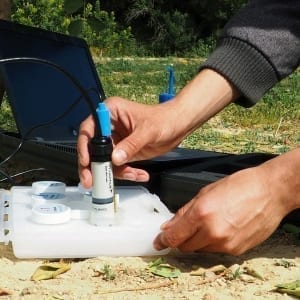Precision agriculture is a relatively new concept.
It was born in the USA in the early 80s, but its importance has grown exponentially in recent years with the arrival of new technologies (sensors, GPS, drones…).
The field and crops are dynamic and constantly changing, so it is necessary to analyze and understand all these variations and peculiarities of the environment to be able to provide the exact inputs for crop optimization.
The application of the most innovative technology in all fields of agriculture allows us to obtain the necessary information to understand soil and crop variations.
To be able to understand the variability of productivity in agricultural systems, we must analyze two concepts: Spatial and temporal variability.
Spatial heterogeneity is caused by different environmental factors, including soil (texture, depth, nitrogen, phosphorus and potassium content), weeds, diseases.
In this case we can use nutrient analyzers such as IMACIMUS to know the composition of the soil, sap or nutrients present in the irrigation water.
On the other hand, temporal variation is mainly related to differences in climatic conditions between years (hail, drought, rain, etc.) and to management and cultivation practices.
Successful application of Precision Farming practices increases the efficiency of production processes and reduces costs while reducing pollution.
Precision agriculture consists of four phases, the first of which is data acquisition, followed by data analysis and decision making based on the information obtained.
These actions can be either preventive (e.g. anticipating pests and diseases) or managerial (e.g. knowing how much and when to irrigate with the consequent savings) thanks to forecasts and measurements.
The fourth phase is yield monitoring.
Evaluating the production, our actions and the final yield, allows us to rectify mistakes made and to know our successes.
This is possible thanks to the continuous monitoring we have of the crop and thus measure the immediate and long-term effect of our actions.
The ability to store the information allows us to compare between campaigns.
The information collected by means of new technologies allows us to evaluate with greater precision the optimum density of sowing.
Using sensors, we can estimate the appropriate amount of fertilizer or other inputs needed, and more accurately predict crop yield and production.
With IMACIMUS this will be a simple and quick task.
IMACIMUS is the fastest and most reliable nutrient analyzer on the market thanks to its formula based on NT Sensors’ patented nanotechnology.
Precision agriculture is fundamental for a sustainable development of the agricultural sector.
With these new production systems we will be able to guarantee sufficient and sustainable agricultural production.




